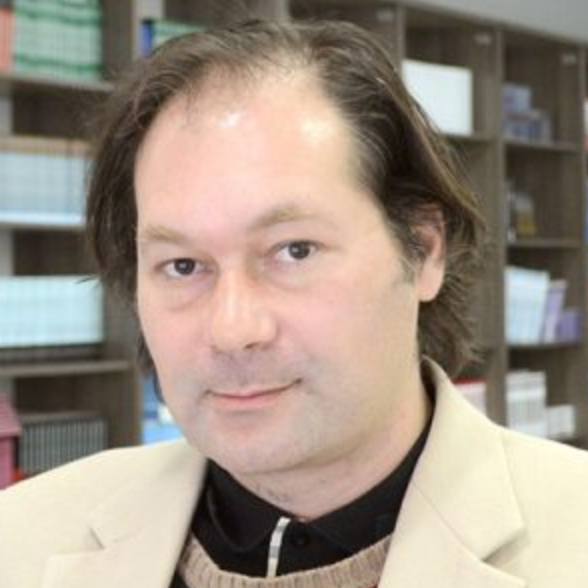International Journal of Image, Graphics and Signal Processing (IJIGSP)
IJIGSP Vol. 5, No. 5, 28 Apr. 2013
Cover page and Table of Contents: PDF (size: 403KB)
On the Signal-Image Intensity-Curvature Content
Full Text (PDF, 403KB), PP.15-21
Views: 0 Downloads: 0
Author(s)
Index Terms
Model Function, Second Order Derivative, Total Curvature, Intensity-Curvature Functional, Intensity-Curvature Measure, Signal-Image Content
Abstract
The biomedical engineering problem addressed in this work is the one of finding a novel signal-image content measure called intensity-curvature functional making use of all of the second order derivatives of the model function fitted to the data. Given a signal-image made of a sequel of discrete samples and given a model function which embeds the property of second order differentiability, it is possible to quantify the content of the signal-image through a novel approach based on both of the intensity and of the total curvature of the signal-image. The signal-image is fitted with the model function. The total curvature can be calculated through the sum of all of the second order derivatives of the Hessian of the model function fitted to the data. The intensity-curvature functional is defined as the ratio between: (i) the integral of the multiplication between the value of the signal modeled through an interpolation function and the total curvature of the signal-image; both of them at the temporal-spatial location of its sampling (the grid nodes) and, (ii) the integral of the value of the multiplication between the signal modeled through an interpolation function and the total curvature of the signal-image; both of them at any given temporal-spatial location of its re-sampling (intra-pixel location). This manuscript shows both of the formulae and the qualitative results of: the intensity-curvature functional and the intensity-curvature measures which are conceptually linked to the intensity-curvature functional. The formulations here presented make the engineering innovation. The intensity-curvature functional depends on both of the model function fitting the signal-image and the magnitude of re-sampling employed to calculate the second order derivatives of the Hessian of the model function.
Cite This Paper
Carlo Ciulla,"On the Signal-Image Intensity-Curvature Content", IJIGSP, vol.5, no.5, pp.15-21, 2013. DOI: 10.5815/ijigsp.2013.05.02
Reference
[1]De Boor, C. A practical guide to splines. Applied mathematical sciences. Springer-Verlag, 1978.
[2]Unser, M., Aldroubi, A. and Eden, M. B-spline signal processing: Part I – theory. IEEE Transactions on Signal Processing, 1993a 41(2): 821-833.
[3]Unser, M., Aldroubi, A. and Eden, M. B-spline signal processing: Part II – efficient design and applications. IEEE Transactions on Signal Processing, 1993b 41(2): 834-848.
[4]Prewitt, J. Object enhancement and extraction, In: Picture Processing and Psychopictorics, B. Lipkin and A, Rosenfeld, Eds. New York: Academic, 1970, 75-149.
[5]Lele, S. K. Compact difference Schemes with Spectral-like Resolution, Journal of Computational Physics, 1992 103: 16-42.
[6]Farid, H. and Simoncelli, E.P. Differentiation of Discrete Multidimensional Signals, IEEE Transactions on Image Processing, 2004 13(4): 496-508.
[7]Cha, Y. Kim, and S. The Error-Amended Sharp Edge (EASE) Scheme for Image Zooming, IEEE Transactions on Image Processing, 2007 16(6): 1496-1505.
[8]Ciulla, C. Improved Signal and Image Interpolation in Biomedical Applications: The Case of Magnetic Resonance Imaging (MRI) – Medical Information Science Reference - IGI Global Publisher, Hershey, PA, U.S.A., 2009
[9]Ciulla, C. Signal Resilient to Interpolation: An Exploration on the Approximation Properties of the Mathematical Functions, CreateSpace Publisher, U.S.A., 2012.
[10]Deng, X. and Denney, T.S. On optimizing knot positions for multidimensional B-spline models, in Proceedings of SPIE, 2004 5299: 175-186.
[11]Blu, T. Thévenaz, P. and Unser, M. Linear interpolation revitalized, IEEE Transactions on Image Processing, 2004 13(5): 710-719.
[12]Hwang, J. W. and Lee, H.S. Adaptive image interpolation based on local gradient features. Signal Processing Letters, IEEE, 2004 11(3): 359-362.
[13]Buckner, R. L., Head, D., Parker, J., Fotenos, A.F., Marcus, D., Morris, J. C. and Snyder, A. Z. A unified ap-proach for morphometric and functional data analysis in young, old, and demented adults using automated atlas-based head size nor-malization: Reliability and validation against manual measurement of total intracranial volume, Neuroimage, 2004 23(2): 724-738.
[14]Fotenos, A. F., Snyder, A. Z., Girton, L. E., Morris, J. C. and Buckner, R. L. Normative estimates of cross-sectional and longitudinal brain volume decline in aging and AD, Neurology, 2005 64: 1032-1039.
[15]Marcus, D. S. Wang, T. H., Parker, J., Csernansky, J. G., Morris, J. C. and Buckner, R. L. Open Access Series of Imaging Studies (OASIS): Cross-sectional MRI data in young, middle aged, nondemented, and demented older adults, Journal of Cognitive Neuroscience, 2007 19(9): 1498-1507.
[16]Morris, J. C. The clinical dementia rating (CDR): current version and scoring rules, Neurology, 1993 43 (11): 2412b-2414b.
[17]Rubin, E. H., Storandt, M., Miller, J. P., Kinscherf, D. A., Grant, E. A., Morris, J. C. and Berg, L. A. A prospective study of cognitive function and onset of dementia in cognitively healthy elders, Archives of Neurology, 1998 55(3): 395-401.
[18]Zhang, Y. Brady, M. and Smith, S. Segmentation of brain MR images through a hidden Markov random field model and the expectation maximization algorithm, IEEE Transactions on Medical Imaging, 2001 20(1): 45-57.
[19]Ciulla C. and Deek, F. P. On the approximate nature of the bivariate linear interpolation function: A novel scheme based on intensity-curvature. ICGST - International Journal on Graphics, Vision and Image Processing, 2005 5(7): 9-19.
